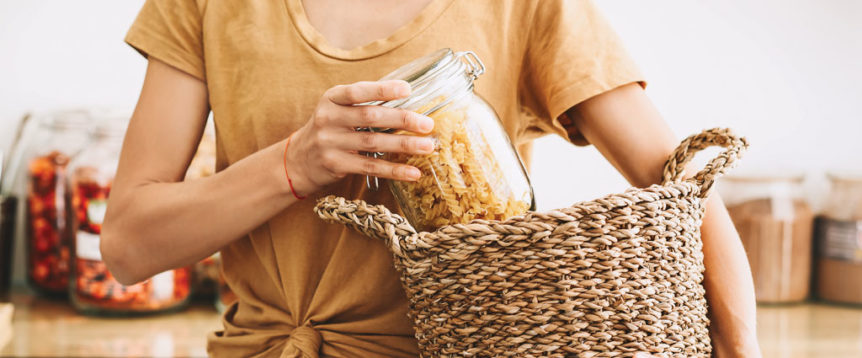Awareness is growing around the environmental impact of packaged foods, both among consumers and the companies that make them. According to the Environmental Protection Agency (EPA), however, containers and packaging still make up over 23 percent of landfill material in the United States, some of which are food-related containers and packaging.
While recycling and composting can be complex due to city-by-city variances, it’s easy to tell just by looking which packaged-food purchases contribute the most to landfills, says Stephanie Moram, a sustainability consultant and creator of the website Good Girl Gone Green (goodgirlgonegreen.com) and the Green Junkie podcast. Moram’s number one tip? Avoid plastic when possible.
“It lasts forever in our environment,” she says. “It pollutes our water and our soil by taking years to decompose, and it can release toxins into the environment.” Further, plastic debris is often ingested by marine animals, and it can injure or poison wildlife, she says. And, sadly, 79 percent of plastic is never recycled, according to the journal Science.
That said, if your favorite condiment still comes in a plastic bottle, keep a list on your phone of which plastics your local recycler takes, Moram suggests. The most common ones are Plastic #1 and #2, but your area may also accept others. Here’s what else Moram recommends for greener packaged food purchases.
Greener Packaging:
Aluminum Cans
“Cans are 100 percent recyclable,” she says. “Aluminum can continuously be recycled, actually, and doesn’t downgrade”—a term for reduction in quality when recycled again and again. And no, you don’t have to remove the wrapping or label from the can to recycle it. Just rinse and deposit!
Cardboard
Cereal, cookie and crackers boxes made from cardboard are sustainable, Moram says, because they can be reused (try boxing a small gift in one before wrapping!) and recycled. Check that the cardboard is not lined with plastic, Moram advises, as that can make it more difficult to recycle. If the box has a plastic film somewhere, like the window on the front of many pasta boxes, remove it before recycling.
Glass
Yes, it’s heavier and breakable, Moram says, but glass jars have all kinds of potential for a second life after that pasta sauce runs out. Brands like Classico pasta sauces and Bonne Maman jams are popular for reuse: Steam the labels off in the dishwasher and turn them into containers for iced coffee, homemade granola or leftovers.
Right-Sized Packaging
Look for foods packaged in a way that do not appear to have an excess amount of weight, space or air. “It is a fine balance [for food companies] to make sure there is less waste but also ensure that the package arrives without damage,” Moram explains, adding, “but cereal companies could definitely make their packaging smaller to reduce waste.”
Eco Storage:


